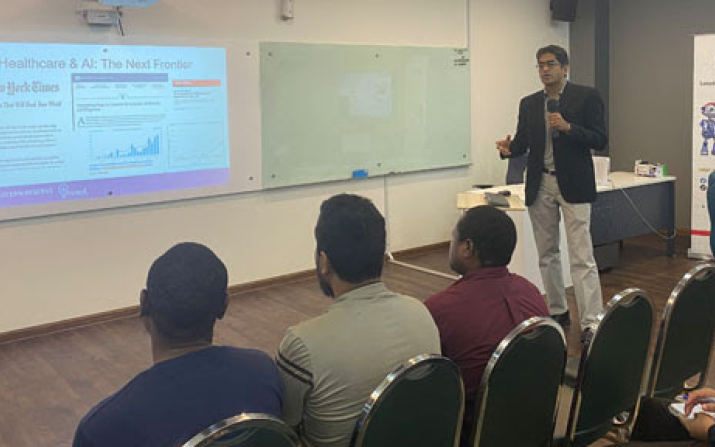Fulbright Spotlight: Satish Viswanath

Each year, thousands of people participate in the U.S. Department of State’s Fulbright programs, prestigious appointments through which students, scholars, educators and other professionals come together to engage in a global exchange of knowledge. A variety of Fulbright programs are offered, each with their own aims and time requirements. In recognition of International Education Week, celebrated Nov. 13–17, The Daily will share the stories of some of Case Western Reserve University’s most recent Fulbright recipients each day this week.
Satish Viswanath, associate professor of biomedical engineering at Case School of Engineering, traveled to Malaysia in August as part of the Fulbright Specialist Program.
During his two-week placement at Multimedia University in Cyberjaya, Viswanath’s work centered on artificial intelligence (AI) and digital pathology—two topics that closely align with his work at Case Western Reserve.
His project was highly collaborative. Viswanath had the opportunity to deliver multiple talks and tutorials, co-organize a workshop for local and international scientists, and contribute his thoughts to a local consortium for digital pathology. And even though he returned in August, his work is not done. Viswanath said he and the researchers he met in Malaysia have been working on potential scientific manuscripts and projects on which they can collaborate.
Read more about his experience in the program.
Answers have been lightly edited for length and clarity.
1. How does receiving a Fulbright award align with your research or teaching goals, and what impact do you anticipate it having on your academic career?
This award gave me the opportunity to make connections with multiple international institutions who are interested in AI, digital pathology and radiology. We are currently working out potential collaborations as a result. This is critical for ensuring global impact of such technologies going forward, through engagement with multiple international communities.
I was also able to educate and disseminate different aspects of my research with multiple international researchers who are working in this domain. I anticipate this forming an important accelerant in my academic career both in terms of the honor of being selected as well as the expanding the potential national and international impact of my research.
2. Could you describe the host institution or country where you conducted research or teaching as part of your Fulbright award?
I was primarily located in Multimedia University in Cyberjaya, Malaysia. I was co-located with my host faculty member and their group, which gave me a chance to work with them closely in terms of brainstorming, working with them on new projects, and free discussions. Everyone was very welcoming and friendly and made it a point to ensure I was comfortable throughout and had access to all the resources I needed at any point in time. The weather was fairly co-operative even if it was pretty warm.
3. Were there any challenges in adapting to a new academic and cultural environment, and how did you address them?
No major challenges, since I’m originally from a geographically close country (India). I had a lot of context for how things might operate, so was not taken by surprise. I had a chance to not only tour a number of local landmarks and museums, but also sample multiple local dishes/produce thanks to my hosts.
4. What advice do you have for other faculty members who are considering applying for Fulbright awards in the future?
Do it! It’s a great way to enjoy some new experiences and cultures—both academic and social. It can help provide a lot of context and ideas for future directions and new collaborations.
